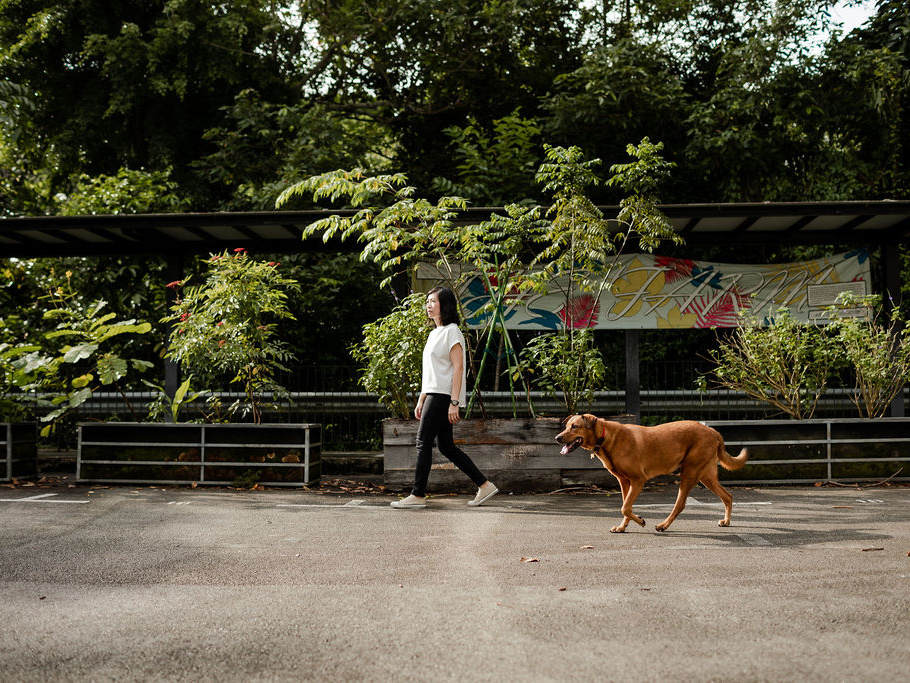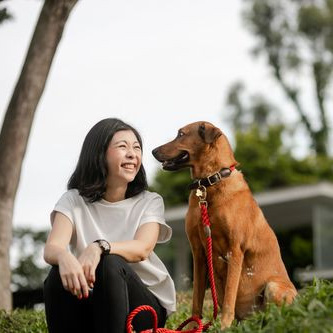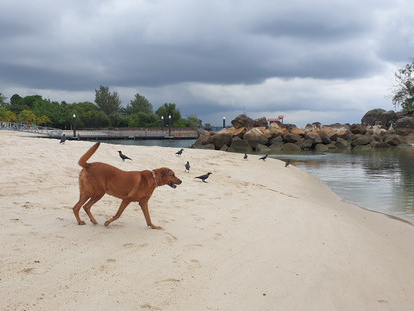
Why you need to see yourself beyond the role of a pawrent
In today’s dogmanship world, too many of us focus so much on being pawrents that we neglect the highly critical portion of raising a balanced dog. A balanced dog is a dog who is aware of its surroundings and is able to have maturity and life skills to navigate whatever situations it faces with its handler. And this includes anyone other than its family members.
In every home of multiple handlers, there’s always ONE primary handler and the rest being secondary. Meaning, dogs tend to follow ONE member of the family a lot more than others. In a home of multiple dogs and members, dogs naturally gear towards to members of the family that they have confidence in. If you have multiple dogs and people at home, be sure to have clarity who is the primary and who are the secondary handlers.
As the primary handler, when you and your dog are together, you are ONE team. Every day, in your walks, play, feeding etc, you’re engaging in a team sport. Like any sport, there are clear rules on how to score points and strategies on how to win.
The success of your team is dependent on:
(A) Your dogmanship abilities – this is your natural ability to handle, guide, teach a dog. Some of us are naturally more talented than others. So it’s important to know yourself and the areas in which you need help with. Don’t measure yourself with another person. Everyone is wired differently and in order for you to find another you is 1:33million chances. Be content with who you are and lead your dog with who you are. Skills and techniques in dog handling are acquired over time, so be patient.
(B) How much dog there is in our dogs – this is where some “positive only” people might disagree with me. So hear me out before you jump the gun. Every dog has different ‘dogness’ levels. For example, police dogs that are selected to do guarding and protection work are bred for their aggression. These dogs do not respond to pressure easily. From a young age, they are encouraged to bite and this is why often times you see their trainers even beating them and that makes them hold on to the bite even more. This is why these dogs can chase after the bad guys and hold on even if they are attacked. Likewise a dog that’s bred to be a service dog will have less ‘dogness’ in them because they are bred to work with their handlers in assisting them. Pet dogs are bred to have the least ‘dogness’ in them. This however, differs from breed to breed. E.g. a German Shepherd from a pet line could still potentially have a log more dog in it than say a King Charles Cavalier. Simply because they were bred for different jobs.
If you have a Singapore Special or a mongrel/ mutt like I do, then it’s much harder to gauge the dogness level simply because we do not know that dog’s ancestry.
Being able to have clarity on these two points will help you decide on what training approach you need to take. Unfortunately, this is not how many of us decide. We tend to decide based on trends and the advise that’s given to us by the circle of so-called experts.
As an experienced dog owner, I’ve often come across people who have a dog that’s a lot more dog than they can actually manage on a day to day basis. If you’re a softie at heart, and if you have a dog that doesn’t back down to pressure, then you have to be prepared for your dog to test you a lot more than someone whose less of a softie.
Benefits of adopting a team sport perspective
By being able to go beyond the pawrent perspective helps us to be able to
1. Improve our relationship – when we are able to have a more objective perspective, we are able to gain clarity on the areas where we are strong in and areas where we need improvement. When we gain clarity, we are then able to break down our goals and manage our expectations of ourselves and those of our dogs.

2. Create healthy boundaries – Because our dogs mature very intensively within the first year of its life, going beyond the pawrent role helps us to cultivate healthier way in which we can relate and engage our dogs. Just like how our parents don’t treat us like babies when we’re in our teens, we should seek to do the same for our dogs.
3. Encourages ongoing growth and development that is for the entire lifetime of the dog instead of just for a period. Professional athletes have a life after retiring from their sport. Likewise, our dogs should also be engaged in appropriate ways that will take them into their golden years.
4. It helps to build engagement. In a team sport, every member on that team has a specific role. Hence, everyone is clear about what is expected of them and they know WHAT, WHEN, HOW to participate meaningfully. When we adopt this perspective of being in a team, we are then able to translate clear expectations to our dogs. When our dogs know what it is expected of them, they are more motivated to do more for us.

5. It gives our dogs a sense of purpose, self-confidence and awareness. Have you ever played with a team and won a competition? Didn’t that make you feel good? Life is like a competition. We have fears to overcome. Hurdles to cross. What will our dogs say about us as their coach if they could speak? Will they say, ‘I’m on the winning team because I conquer something every day?’
Our dogs’ lives are short. Why would we want to use a lifetime to train the dog to overcome its fears when we can use that same lifetime to enjoy life together?
* This blog is designed to be a community where pet owners can learn and share. The views expressed in each post are the opinion of the author and not necessarily endorsed by Pawjourr. Always consult your veterinarian for professional advice.
